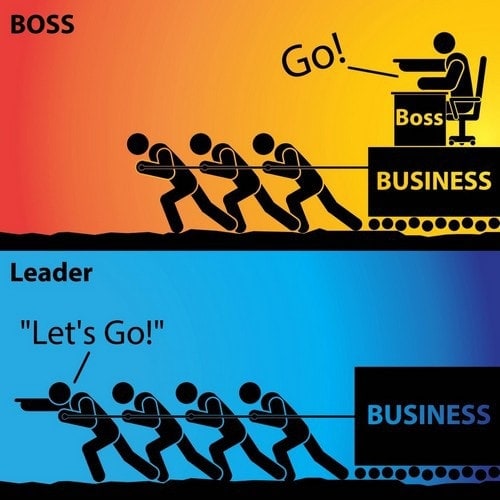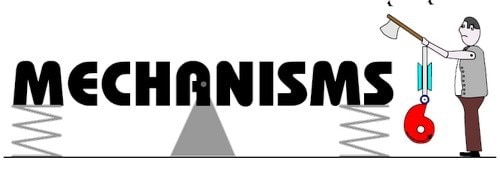The framework of the Six Box Model by Weisbord was developed by Marvin Weisbord and the specialty of this model is that it helps the companies to accurately assess the functionality of their business operations and processes that drive the factors of growth and success. One of the main advantages of using this specific model is that it has the ability to adapt to the various kinds of business domains and is not restricted to just one industry.
Table of Contents
Anatomy of the Six Box Model by Weisbord
The six boxes that define and make up the model are purposes, structure, relationships, rewards, leadership, and helpful mechanisms.
It is very important and crucial to carefully analyze and understand the Six Box Model by Weisbord as it works as one of the most crucial exercises for the business and helps to reveal the number of interesting discoveries that help in the growth of the business and the relates profits.
The model helps the businesses to focus on the common mistakes that the management of the company assumes that they know and understand each and every facet of the business. There is always more and more to understand and learn to gain the competitive advantage and make it big in the industry. Its Components are as follows.
What additional strategies can enhance the effectiveness of the Six Box Model implementation?
Successful implementation of the Six Box Model can be observed in recent case studies across different industries. For instance, a major tech company, XYZ Corp, recently utilized this model to streamline its operations by focusing on the “Structure” and “Leadership” boxes. By aligning their internal team roles with company objectives, they reported a 15% increase in productivity within six months. Moreover, enhanced leadership strategies led to a 20% improvement in employee satisfaction scores, as noted in the company’s internal HR reports. This showcases the model’s adaptability and its potential to drive significant organizational improvements.
For practitioners interested in exploring the Six Box Model further, several resources are available for deeper learning. A comprehensive guide, “Analyzing Organizational Dynamics with Weisbord’s Model,” by Weisbord himself, offers detailed insights and practical applications. Additionally, platforms like Coursera and LinkedIn Learning provide specialized courses on organizational behavior that incorporate the Six Box Model as part of their curriculum. These resources offer valuable tools for professionals seeking to leverage this model effectively within their organizations.
- Purposes: This aspect of the model harps on the fact that the management and all the key members of the team agree and support the overall values, goals, aims, and mission of the organization.
- Structure: This aspect of the model focuses on the fact that if there is a proper and deemed fit between the internal structure and overall purposes of the organization.
- Relationships: This aspect of the model makes the management understand what kind of relations exists between the various individuals of the company, between the departments, and more importantly between the individuals and nature of their work. It also focuses on the facets of conflicts if any, the kind of interdependencies, and the nature and quality of relations.
- Rewards: This aspect of the model harps on the fact that what kind of rewards do the organizations gives to its employees, for what kind of attributes the employees are rewarded and punished for and what steps does the organization takes to fit in the business environment.
- Leadership: This aspect of the model focuses on the style of the leadership followed in the organization, the leadership programs defined by the leaders of the organization, and are they well aligned with the nature, core values, and objectives of the organization.
- Helpful Mechanisms: This aspect of the model focuses on if the various mechanisms of the organization help in accomplishing the objectives or works as an obstacle in the path of their attainment.
Detailed Components of the Six Box Model by Marvin Weisbord
1) Purposes
The very first and foremost box of the Six Box Model by Weisbord is quite general in nature but hold quite a prominent position. It helps you to carefully analyze and understand that what business are you in and what nature and type of business you want to move forward it on a long-term basis
It might sound quite simple and easy but if you come to think on a long-term basis and dwell on the idea a couple of times, it gets quite complicated at times. You need to understand and figure out the types of products and services that you want to offer to the market, who will be your target audience, what will be your target market, figuring out the expected and unexpected hurdles that you may face. Plus it is also very important to study and analyze that who are your direct and indirect competitors that can pose a threat to your business.
2) Structure
The second box of the Six Box Model by Weisbord focuses on the facts that how your business operates and works on the daily basis and helps you with the in-depth analysis of the day to day operations. The main structure of the organization stands as a testament to the aspects that what it will be able to manufacture on the daily basis and at what cost will it be able to manufacture the offerings of the products that work as one of the crucial determinants of the revenue generation and profits.
Next in the line are the roles and responsibilities of the each and every individual to attain the objectives and purposes of the organization as the proper and well-aligned structuring of the business operations helps to produce the desired outputs and take a business a long way with the competitive advantage. If the company comes up with the good quality and innovative products but it is not very well structured, everything gets derailed. It is very important to consider this point of the model in the most crucial manner to successfully accomplish the goals and objectives of the company.
3) Relationships
The success and growth of the business are mainly dependent on the factor of relationships. There is a management of relationships between the management and the employees, between the employees of the organization, between the management and employees with the outside parties such as investors, customers, stakeholders, and other vendors. And there is a relationship between the employees and the technologies used and all of the above-mentioned relationships should be fruitful in nature to attain the desired outputs.
If there is any sort of issue or conflict in any of these relationships, then the management of the company needs to take the quick and concrete steps to resolve these conflicts so that they don’t become the hurdle in the path of attainment of the business objectives. The conflicts are bound to happen but the key is to know how to handle and resolve them in an effective manner as healthy relationships are very crucial for the growth of the business.
4) Rewards
The fourth box of the model harps on the fact that many people feel motivated and function at their best of the capabilities when they are rewarded for the efficiency of their work. Earning the salary is the natural reward in any organization but the management of the company needs to go an extra mile by rewarding the employees by going beyond the salaries to get the best and effective efforts out of them.
It is very important to create a culture within the entire organization where each and every member right from the top management to the executives and assistants are rewarded for their good work to feel motivated and the sense of ownership towards the organization.
5) Leadership
The management of the organization needs to have strong leadership skills as it will not only keep the staff motivated but will help the organization attain its aims and objectives in a successful manner. Having a strong leadership skills doesn’t mean to rule the company with the iron fist but the leader has to be caring, understanding, patient, and work as a part of the team leading them and the company towards the path of success.
6) Helpful Mechanisms
It is very important for the organization to have a set of helpful mechanisms such as raw materials, technological resources, and others that help in attaining its objectives and stay relevant in the market gaining the competitive advantage. It is important to keep a check on the changing market trends and dynamics as the mechanisms that were once relevant can become redundant in nature.
Liked this post? Check out the complete series on Management






Very helpful sir. like it